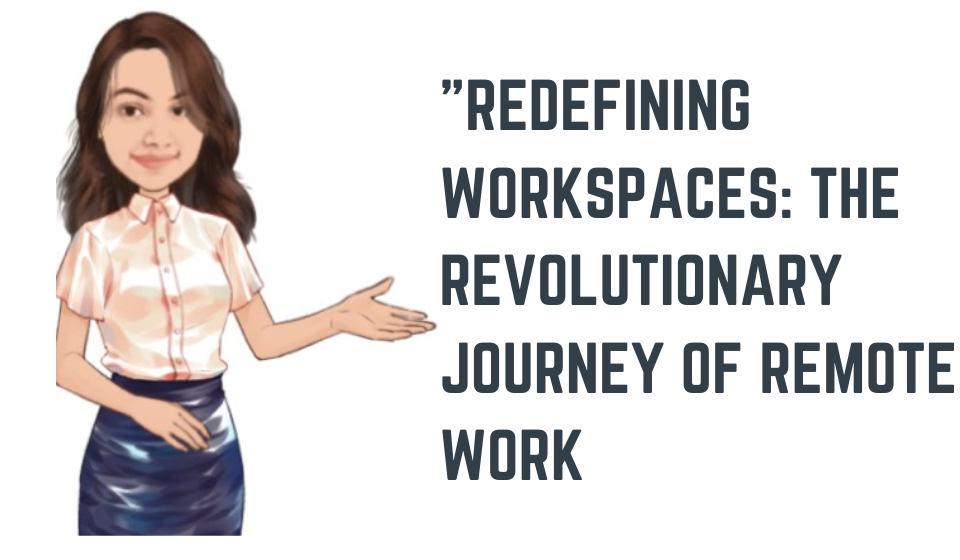“Redefining Workspaces: The Revolutionary Journey of Remote Work Tools into the Era of Unparalleled Productivity and Collaboration”


As the dust settles on the post-pandemic world, it’s clear that remote work isn’t just a temporary expedient—it’s a staple of the modern professional landscape. The transition from in-office to remote and hybrid work environments has been facilitated by a slew of innovative software and platforms, each promising to streamline productivity and collaboration. This evolution has altered not only where we work but also how we work, pushing the boundaries of what’s possible outside of the traditional office space.
In the early days of remote work, tools like email and basic communication platforms were commonplace. Today, we’re looking at a more sophisticated array of solutions, tailoring the needs of dispersed teams and ensuring that distance is no longer an impediment to effective collaboration.
## Advanced Communication Platforms
Communication is the lifeline of remote work, and as such, we have seen platforms like Zoom, Slack, and Microsoft Teams evolve from simple messaging and video call tools to comprehensive suites offering a plethora of features. These include integrated workspace chats, file sharing, third-party app integrations, and even AI-powered meeting assistants. The goal is clear: to make digital interaction as seamless as possible.
## Project Management Reinvented
Software like Asana, Trello, and Monday.com has revolutionized project management with their intuitive interfaces and customizable workflows. Now built with remote teams in mind, these tools offer real-time updates, automation features, and visualization options to keep everyone aligned and focused on their goals, irrespective of geographical barriers.

## Virtual Offices and Spaces
The concept of the virtual office is on the rise, with platforms such as Sococo and Gather providing a visual representation of a physical office space. These immersive environments allow for spontaneous interactions and ‘water cooler’ conversations which are often missing from remote setups. Virtual spaces are particularly adept at fostering company culture and a sense of belonging among remote workers.
## Cloud-Based Collaboration
The cloud has been a game-changer for remote work, with Google Workspace and Microsoft 365 leading the charge. The integration of docs, spreadsheets, emails, and storage in a single ecosystem accessible from anywhere has dramatically increased the ease and speed with which remote teams can operate.
## AI and Machine Learning Enhancements
A noteworthy trend is the increasing integration of AI into remote work tools. AI can now help schedule meetings, suggest tasks, or even draft emails. These intelligent features are built into platforms like x.ai and Otter.ai, enhancing efficiency and reducing the cognitive load on remote workers.
In conclusion, the evolution of remote work tools has not only kept pace with the increase in remote work but has also accelerated advancements in technology and user experience design. These tools are redefining the boundaries of productivity and collaboration, enabling remote and hybrid teams to perform at levels previously confined to in-person interactions.
From communication to management, and from storage to enhancement through AI, each tool brings a unique value that complements the remote work ecosystem. It is an exciting time for remote work as these tools continue to evolve, and their role in shaping the future of work cannot be overstated. As we look ahead, the continuous innovation in remote work tools will undoubtedly unlock more doors to global collaboration and unrestricted productivity.

The choice of a project management tool for remote teams can depend greatly on the specific needs of the team, the nature of the projects, the team size, workflow complexity, and the budget. Here are a few popular project management tools that are well-suited for remote teams:
1. **Asana**: Good for teams that require a user-friendly interface with flexible task and project management features. It allows for task assignments, timelines, to-do lists, and integrates with various other apps.
2. **Trello**: Ideal for teams that prefer a simple, card-based interface for managing tasks and projects. It is very visual and straightforward, using the Kanban methodology.
3. **Basecamp**: A great all-in-one tool for team communication and project organization. It includes to-do lists, file sharing, message boards, and a centralized schedule.
4. **Monday.com**: Known for its high customization capabilities, it is suitable for all sorts of project management needs. It offers various views like Kanban, Gantt, and calendar views.
5. **Slack + Various Plugins**: While Slack is primarily a communication tool, it can be turned into a powerful project management tool with the integration of plugins and bots that can manage tasks and updates.
6. **Jira**: Perfect for software development teams that use Agile methodology. It provides scrum and Kanban boards, roadmaps, and detailed reporting.
7. **ClickUp**: An all-in-one project management tool that aims to replace several workflow apps. It’s highly customizable and offers features from task assignments to document sharing and Gantt charts.
8. **Smartsheet**: Best for teams in need of a spreadsheet-like interface with powerful project management and collaboration features, including workflow automation.
9. **Wrike**: A versatile project management tool with good tracking capabilities, resource management, and customized reports. Suitable for teams of all sizes.
10. **Microsoft Teams + Planner**: Good for teams already embedded in the Microsoft ecosystem. Teams provide strong communication capabilities, while Planner offers task management.
When choosing a tool, consider the following factors:
– **Ease of Use**: The tool should have an intuitive interface that doesn’t require a steep learning curve.
– **Functionality**: Ensure it has all the features your team needs, including task management, file sharing, timeline views, and reporting.
– **Integrations**: The tool should integrate well with other tools your team uses, like email, calendar, cloud storage, etc.
– **Scalability**: Can the tool grow with your team and handle the increasing complexity of projects?
– **Support**: Look for good customer support and resources like tutorials, forums, and documentation.
– **Cost**: Evaluate the pricing models to ensure they fit within your budget, considering both current costs and potential costs as your team grows.
Ultimately, the best tool is the one that your team will actually use and that supports your workflows and communication styles effectively. It’s often recommended to trial a few options before making a final decision.







You could definitely see your skills in the work you write. The arena hopes for more passionate writers like you who aren’t afraid to say how they believe. All the time go after your heart. “History is the version of past events that people have decided to agree upon.” by Napoleon.
“Redefining Workspaces: The Revolutionary Journey of Remote Work Tools into the Era of Unparalleled Productivity and Collaboration” – Thinkerator
azmlnncrvnq
zmlnncrvnq http://www.gkj2rbp78zi0op106u860d0888m6eoh3s.org/
[url=http://www.gkj2rbp78zi0op106u860d0888m6eoh3s.org/]uzmlnncrvnq[/url]
“Redefining Workspaces: The Revolutionary Journey of Remote Work Tools into the Era of Unparalleled Productivity and Collaboration” – Thinkerator
ajhzbkqxjfi
jhzbkqxjfi http://www.g58ou1593p3m712t1erlb0l2mdv6n6x9s.org/
[url=http://www.g58ou1593p3m712t1erlb0l2mdv6n6x9s.org/]ujhzbkqxjfi[/url]